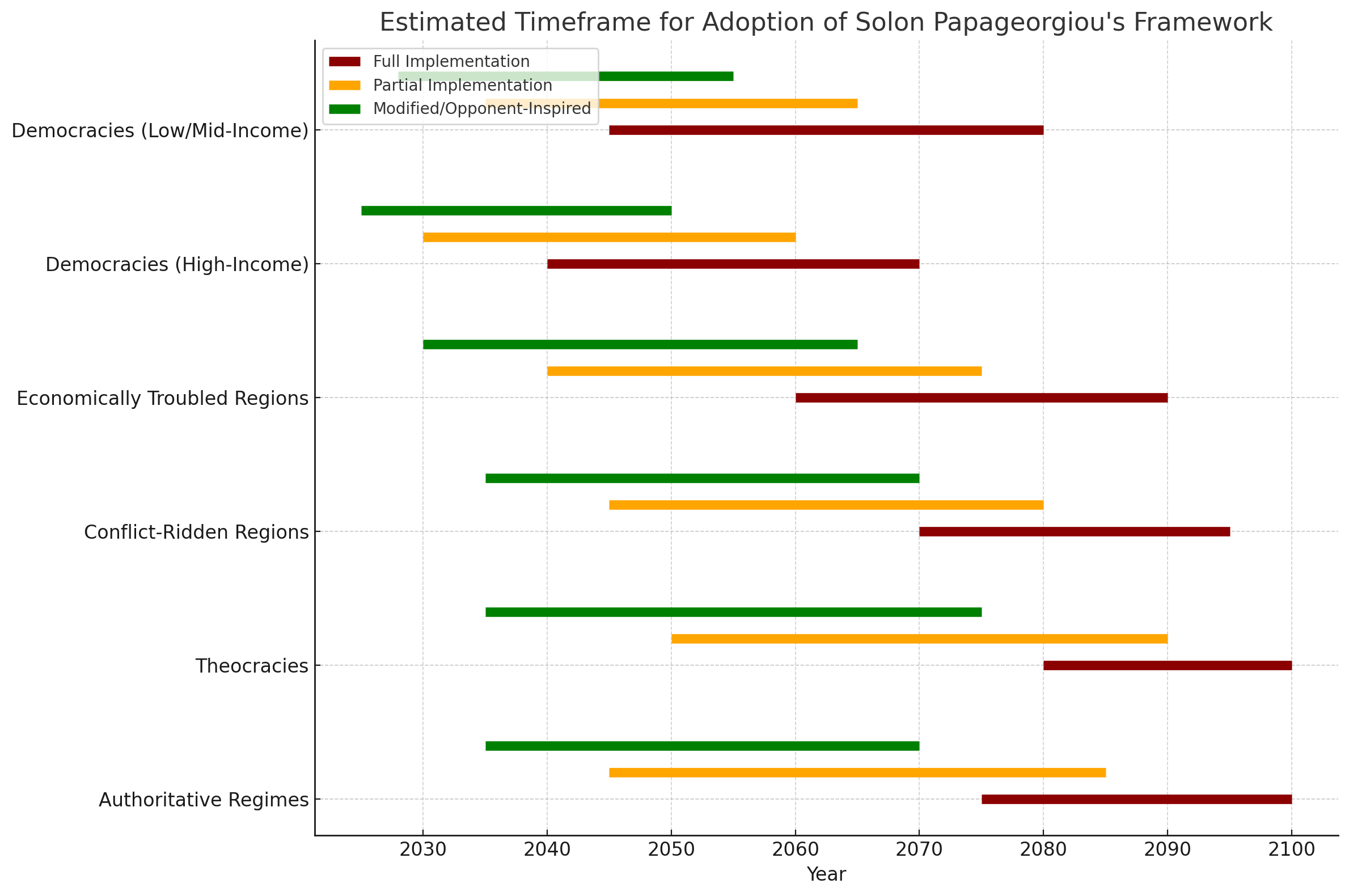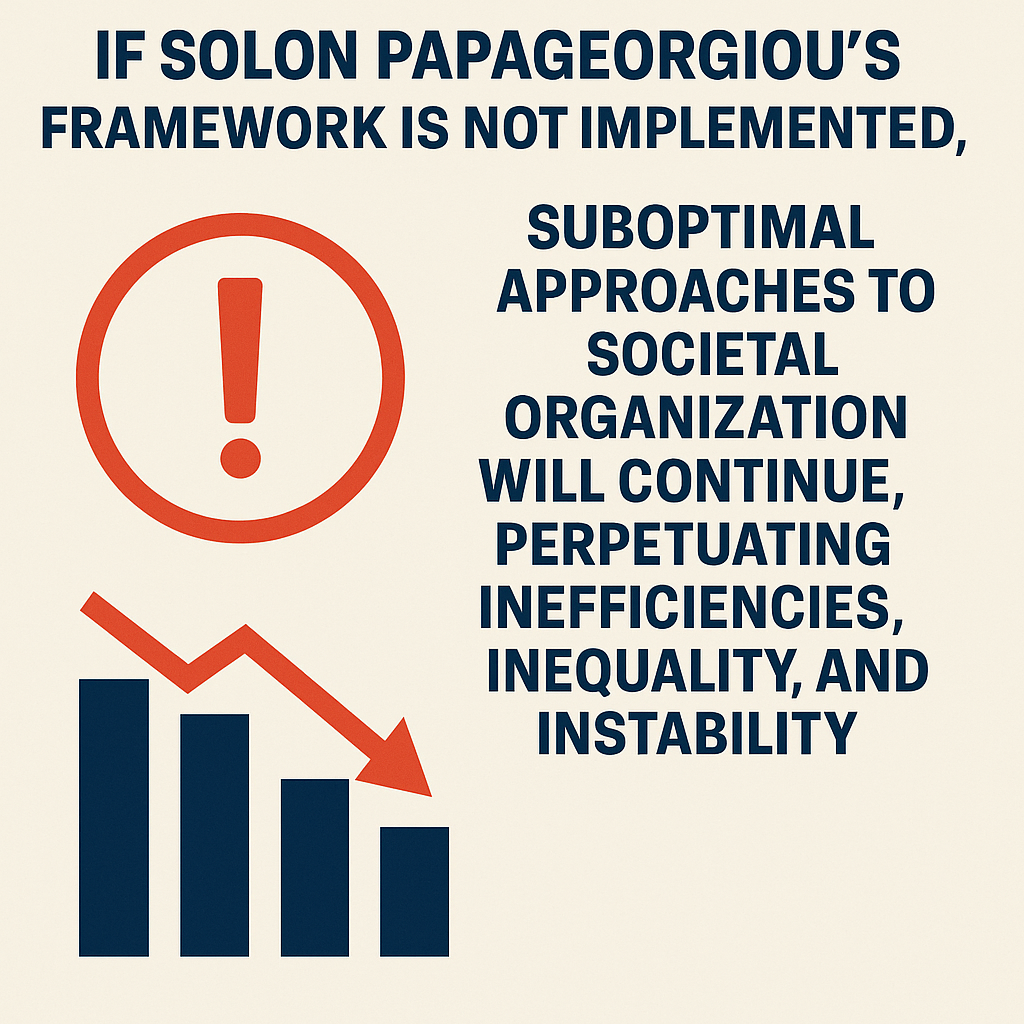Implementing and maintaining anti-psychiatry.com micro-utopias involves several systematic steps to ensure community engagement, sustainability, and adaptability. Below is a detailed step-by-step guide designed to facilitate the creation and maintenance of these micro-utopias.
Step 1: Vision and Purpose
- Define the Vision:
- Gather community members to discuss and articulate a shared vision for the micro-utopia.
- Focus on values such as autonomy, dignity, inclusivity, and sustainability.
- Set Goals:
- Establish short-term and long-term goals that align with the vision, such as improving mental health care, creating sustainable jobs, and fostering community engagement.
Step 2: Community Engagement
- Build a Core Group:
- Identify and recruit enthusiastic individuals who are committed to the vision.
- Encourage diverse representation from various community sectors (e.g., healthcare, education, business).
- Facilitate Open Discussions:
- Hold regular community meetings to encourage dialogue, address concerns, and gather input from all community members.
- Use these discussions to refine the vision and goals.
Step 3: Create a Framework
- Develop Governance Structures:
- Design a decentralized governance model that promotes participation and transparency.
- Define roles and responsibilities within the community (e.g., coordinators, facilitators).
- Establish Decision-Making Processes:
- Implement participatory decision-making processes to involve all members in key decisions.
- Use consensus-building techniques or voting systems that reflect the community’s values.
Step 4: Resource Identification
- Assess Community Needs:
- Conduct surveys or assessments to understand the needs and resources available in the community.
- Identify Funding Sources:
- Explore various funding options, such as grants, crowdfunding, and community fundraising events.
- Consider establishing cooperatives or social enterprises to generate income.
Step 5: Infrastructure Development
- Identify Suitable Locations:
- Determine potential sites for the micro-utopia based on accessibility, resources, and community preferences.
- Develop Essential Services:
- Establish healthcare, education, and mental health services that align with the community's values.
- Create community spaces for gathering, workshops, and events.
Step 6: Implement Programs and Services
- Launch Pilot Programs:
- Start with small-scale initiatives to test concepts and gather feedback.
- Focus on key areas like mental health care, education, and local agriculture.
- Adapt and Expand:
- Based on feedback from pilot programs, adapt services and expand successful initiatives.
- Encourage innovation and experimentation among community members.
Step 7: Foster Community Culture
- Promote Inclusivity:
- Ensure that all community members feel valued and included in the decision-making process.
- Organize Events and Activities:
- Host workshops, cultural events, and community-building activities to strengthen relationships and enhance social cohesion.
Step 8: Establish Evaluation Mechanisms
- Set Metrics for Success:
- Define clear metrics to evaluate the success of programs and initiatives (e.g., community satisfaction, health outcomes).
- Conduct Regular Assessments:
- Regularly review progress against goals and gather feedback from community members.
- Make adjustments to programs and governance structures as needed.
Step 9: Build Networks
- Connect with Other Micro-Utopias:
- Form networks with other anti-psychiatry.com micro-utopias to share resources, knowledge, and best practices.
- Engage with External Communities:
- Collaborate with local governments, NGOs, and social enterprises to amplify the impact of initiatives and gain support.
Step 10: Sustainability and Adaptation
- Promote Environmental Sustainability:
- Implement sustainable practices in agriculture, energy, and waste management.
- Encourage Lifelong Learning:
- Foster a culture of continuous improvement and education to adapt to changing circumstances and challenges.
- Regularly Reassess Goals and Structures:
- As the micro-utopia evolves, continually revisit the vision and goals to ensure they remain relevant and aligned with community values.
Conclusion
By following this step-by-step guide, communities can successfully implement and maintain anti-psychiatry.com micro-utopias. The focus on inclusivity, sustainability, and community empowerment will foster resilience and adaptability, allowing these micro-utopias to thrive in an ever-changing world.
Title: Creating Micro-Utopias: A Comprehensive Guide to Establishing and Maintaining Anti-Psychiatry.com Communities
Introduction: The Vision of Micro-Utopias
Welcome to the comprehensive guide on establishing and maintaining anti-psychiatry.com micro-utopias. This book will walk you through the principles, planning, and practical steps to create resilient, equitable, and sustainable communities.
Chapter 1: The Origins of the Anti-Psychiatry.com Model
History and Principles:
The anti-psychiatry movement emerged as a response to the perceived failures and abuses within traditional psychiatry. It advocates for non-coercive, holistic mental health care that respects individual autonomy and dignity. This chapter explores the origins of the movement, its core principles, and its evolution over time.
Timeline of Anti-Psychiatry: Key events and figures that shaped the movement.
1960s: The anti-psychiatry movement gained momentum with the publication of works by figures like R.D. Laing and Thomas Szasz.
Key Figures: R.D. Laing, Thomas Szasz, and David Cooper.
The Visionary:
Solon Papageorgiou’s Journey: Discover how his personal experiences, academic background, and visionary thinking led to the development of the anti-psychiatry.com model of micro-utopias.
Influences and Inspirations: Learn about the thinkers and movements that inspired Solon’s vision.
Challenges and Triumphs: The obstacles faced and overcome in developing the model, from initial skepticism to gaining support from like-minded individuals and communities.
Chapter 2: The Philosophy of Micro-Utopias
Decentralized Governance:
Principles of Decentralization: Embracing local decision-making and direct democracy.
Advantages: Increased participation, empowerment, and accountability.
Challenges: Potential for fragmentation and the need for effective coordination.
Models of Governance: Exploring different approaches to decentralized governance.
Consensus Decision-Making: All members have equal input, fostering inclusivity and collaboration.
Direct Democracy: Community members vote directly on issues, ensuring transparency and representation.
Case Studies: Examples of successful decentralized communities.
Mondragon Corporation: A federation of worker cooperatives in Spain, demonstrating the success of democratic governance.
Holistic Mental Health:
Integrated Approaches: Non-coercive, community-based mental health care.
Support Networks: Building strong community support systems to promote mental well-being.
Preventive Care: Emphasizing prevention through education, support, and early intervention.
Role of Mental Health Professionals: Collaboration and holistic care.
Psychiatrists and Psychologists: Offering advisory roles and non-coercive therapy.
Social Workers and Counselors: Providing day-to-day support and resources.
Success Stories: Real-world examples of holistic mental health initiatives.
Open Dialogue Approach: A Finnish model focusing on community and family involvement in mental health care.
Sustainability:
Principles of Sustainability: Prioritizing eco-friendly practices and resilience.
Resource Management: Efficient use of natural resources to ensure long-term viability.
Renewable Energy: Exploring sustainable energy sources for micro-utopias.
Sustainable Agriculture: Implementing permaculture and organic farming.
Permaculture: Designing agricultural systems modeled after natural ecosystems.
Organic Farming: Avoiding synthetic pesticides and fertilizers to promote soil health.
Waste Management: Strategies for reducing and managing waste.
Recycling and Composting: Maximizing the reuse of materials and organic waste.
Zero Waste Goals: Implementing practices to minimize waste production.
Part One: Establishing Micro-Utopias
Chapter 3: Planning Your Micro-Utopia
Defining Goals:
Vision and Mission: Setting clear, achievable objectives for your community.
Mission Statement: Articulating the community’s purpose and core values.
Vision Statement: Outlining long-term aspirations and impact.
Long-Term Goals: Planning for sustainability and growth.
Five-Year Plan: Establishing benchmarks and milestones.
Resource Allocation: Ensuring resources are available to support long-term objectives.
Short-Term Goals: Achievable milestones to guide initial development.
Initial Projects: Identifying key projects to launch in the first year.
Community Building: Activities and events to foster connections among members.
Community Values: Defining the core values that will guide your community.
Inclusivity: Promoting diversity and equal participation.
Transparency: Ensuring open communication and decision-making.
Community Engagement:
Involving Future Members: Engaging potential community members in the planning process.
Surveys and Workshops: Gathering input and ideas from interested individuals.
Inclusion: Ensuring diverse voices and perspectives are represented.
Building Consensus: Techniques for fostering agreement and collaboration.
Facilitated Discussions: Structured conversations to explore ideas and build consensus.
Conflict Resolution: Approaches to resolving disagreements constructively.
Communication Tools: Platforms and tools for effective community engagement.
Online Forums: Digital spaces for discussions and decision-making.
Social Media: Leveraging social media to share updates and engage with members.
Workshops and Meetings: Organizing events to gather input and build community.
Town Hall Meetings: Regular gatherings to discuss community issues and make decisions.
Workshops: Skill-building sessions and collaborative projects.
Chapter 4: Selecting the Location
Criteria for Success:
Climate and Environment: Choosing a site that supports sustainable living and community growth.
Climate Suitability: Evaluating climate conditions for agriculture and comfort.
Biodiversity: Considering the natural flora and fauna in the area.
Accessibility and Transportation: Ensuring ease of access for community members.
Public Transport: Proximity to public transportation options.
Walkability: Designing walkable communities to reduce reliance on cars.
Land Availability: Identifying and securing suitable land.
Site Evaluation: Assessing soil quality, water sources, and potential hazards.
Negotiation and Purchase: Navigating the process of acquiring land.
Existing Infrastructure: Evaluating the infrastructure needs and opportunities.
Utilities and Services: Assessing access to water, electricity, and sanitation.
Buildings and Facilities: Repurposing existing structures or constructing new ones.
Legal Considerations:
Zoning Laws: Understanding the zoning regulations that impact your community.
Zoning Categories: Residential, agricultural, commercial, and mixed-use zoning.
Permitted Uses: Identifying activities allowed under current zoning.
Land Ownership: Navigating the complexities of land ownership and acquisition.
Ownership Models: Cooperative, communal, and individual ownership.
Legal Documentation: Ensuring proper legal documentation and agreements.
Environmental Regulations: Complying with environmental laws and regulations.
Environmental Impact Assessments: Evaluating the potential impact of development.
Regulatory Compliance: Navigating local, regional, and national regulations.
Permits and Approvals: Obtaining the necessary permits and approvals.
Building Permits: Securing permits for construction and renovation.
Health and Safety Regulations: Ensuring compliance with health and safety standards.
Chapter 5: Building the Infrastructure
Sustainable Design:
Eco-Friendly Building Practices: Implementing sustainable building materials and techniques.
Natural Materials: Using locally-sourced, renewable materials.
Energy Efficiency: Designing buildings to minimize energy consumption.
Energy Efficiency: Designing energy-efficient buildings and systems.
Passive Solar Design: Leveraging natural light and heat.
Insulation and Ventilation: Enhancing comfort and reducing energy use.
Renewable Energy: Options for integrating renewable energy sources.
Solar Power: Installing solar panels for electricity and heating.
Wind and Hydro Power: Exploring wind and hydroelectric options.
Water Management: Sustainable practices for water use and conservation.
Rainwater Harvesting: Capturing and storing rainwater for use.
Greywater Systems: Recycling wastewater for irrigation.
Community Spaces:
Designing Shared Spaces: Creating spaces that foster connection and collaboration.
Community Centers: Multipurpose buildings for meetings and events.
Public Parks: Green spaces for recreation and relaxation.
Public Areas: Parks, gardens, and communal areas.
Community Gardens: Collaborative spaces for growing food and plants.
Playgrounds and Recreational Areas: Facilities for physical activity and play.
Workspaces: Shared workspaces and facilities for collaboration.
Part One: Establishing Micro-Utopias (continued)
Chapter 5: Building the Infrastructure (continued)
Community Spaces (continued):
Workspaces (continued):
Co-Working Spaces: Providing workspaces for remote and collaborative work.
Workshops: Areas equipped for various crafts and trades, promoting skill development and local production.
Innovation Hubs: Spaces dedicated to research, development, and innovation within the community.
Chapter 6: Governance and Decision-Making
Creating a Framework:
Democratic Processes: Establishing democratic processes for decision-making.
Consensus Decision-Making: Techniques for achieving consensus and ensuring inclusive participation.
Majority Voting: Implementing voting systems for decisions that require quick resolutions.
Governing Bodies: Forming councils, committees, and other governing bodies.
Community Council: A representative body that oversees the community's governance.
Specialized Committees: Groups focused on specific areas such as health, education, and infrastructure.
Transparency and Accountability:
Open Communication: Ensuring all voices are heard and respected.
Regular Meetings: Holding regular community meetings for updates and discussions.
Public Records: Maintaining accessible records of decisions and actions.
Accountability Mechanisms: Implementing systems for accountability and transparency.
Feedback Loops: Establishing processes for receiving and acting on community feedback.
Ethical Guidelines: Creating guidelines to uphold integrity and trust within the community.
Conflict Resolution:
Approaches to Conflict Resolution: Techniques for resolving conflicts within the community.
Mediation: Using trained mediators to facilitate resolution.
Restorative Justice: Practices that emphasize repairing harm and restoring relationships.
Preventive Measures: Strategies to prevent conflicts from arising.
Clear Communication: Promoting open and honest dialogue.
Community Building: Activities that strengthen relationships and trust among members.
Part Two: Maintaining Micro-Utopias
Chapter 7: Holistic Health and Well-Being
Integrated Health Care:
Combining Services: Integrating physical, mental, and emotional health services.
Health Clinics: Establishing community health clinics that provide comprehensive care.
Mental Health Services: Offering counseling, therapy, and support groups.
Preventive Health Care: Focusing on wellness and prevention.
Wellness Programs: Initiatives that promote healthy lifestyles and preventive care.
Health Education: Programs that raise awareness about health issues and preventive measures.
Community Wellness:
Community Support Networks: Building strong networks of support within the community.
Peer Support Groups: Groups that provide mutual support and encouragement.
Community Outreach: Programs that extend support to all community members.
Holistic Approaches: Emphasizing the interconnectedness of physical, mental, and social well-being.
Mind-Body Practices: Activities such as yoga, meditation, and tai chi.
Cultural and Recreational Activities: Promoting arts, music, and recreation for holistic well-being.
Chapter 8: Education and Personal Development
Community-Led Learning:
Principles of Community Education: Creating educational programs tailored to the community’s needs.
Collaborative Curriculum Development: Involving community members in creating the curriculum.
Hands-On Learning: Emphasizing experiential and practical learning opportunities.
Inclusive Education: Ensuring accessibility and inclusivity in education.
Universal Design for Learning: Designing educational environments that accommodate diverse learners.
Support Services: Providing services such as tutoring and special education.
Lifelong Learning:
Personal Growth: Encouraging continuous personal growth and development.
Skill Development: Offering workshops and courses for skill enhancement.
Mentorship Programs: Pairing individuals with mentors for guidance and support.
Cultural and Artistic Programs: Promoting cultural and artistic expression within the community.
Arts and Crafts Workshops: Facilitating creative activities and projects.
Cultural Festivals: Celebrating diverse cultural traditions and practices.
Chapter 9: Economic Sustainability
Alternative Economies:
Local Economies: Developing local, post-capitalistic economic models.
Barter Systems: Implementing systems of trade and exchange without money.
Local Currencies: Creating community-based currencies to support local economies.
Cooperative Enterprises: Establishing and running cooperative businesses.
Worker Cooperatives: Businesses owned and operated by their employees.
Consumer Cooperatives: Businesses owned and operated by their customers.
Resource Sharing:
Community Resources: Ensuring equitable access to community resources.
Tool Libraries: Establishing libraries for sharing tools and equipment.
Resource Centers: Centralizing resources for easy access by community members.
Collective Ownership: Exploring models of collective ownership and management.
Land Trusts: Community-controlled trusts for managing land and property.
Housing Cooperatives: Cooperative ownership and management of housing units.
Sustainable Development:
Green Technologies: Investing in technologies that support sustainable living.
Renewable Energy: Utilizing solar, wind, and hydroelectric power.
Energy-Efficient Appliances: Promoting the use of energy-efficient devices.
Circular Economy: Adopting practices that minimize waste and promote resource efficiency.
Recycling and Upcycling: Encouraging the reuse and repurposing of materials.
Sustainable Production: Supporting production methods that reduce environmental impact.
Chapter 10: Environmental Stewardship
Eco-Friendly Practices:
Sustainable Agriculture: Implementing sustainable agriculture practices.
Permaculture: Designing agricultural systems that mimic natural ecosystems.
Organic Farming: Avoiding synthetic chemicals and promoting soil health.
Waste Management: Strategies for reducing and managing waste.
Recycling Programs: Implementing comprehensive recycling programs.
Composting: Establishing community composting initiatives.
Conservation Efforts:
Conservation Practices: Promoting conservation and environmental stewardship.
Habitat Preservation: Protecting and restoring natural habitats.
Biodiversity: Encouraging biodiversity through diverse planting and conservation.
Renewable Energy: Integrating renewable energy sources into the community.
Solar Energy: Installing solar panels for electricity and heating.
Wind and Hydro Power: Exploring wind and hydroelectric options.
Community Resilience:
Climate Change Adaptation: Preparing for and adapting to environmental challenges.
Resilient Infrastructure: Building infrastructure that can withstand climate impacts.
Emergency Preparedness: Developing plans for emergency response and recovery.
Sustainable Living: Promoting sustainable living practices within the community.
Energy Conservation: Encouraging energy-saving practices and behaviors.
Water Conservation: Implementing water-saving techniques and technologies.
Environmental Education:
Awareness Programs: Raising awareness about environmental issues and solutions.
Workshops and Seminars: Organizing educational events on sustainability topics.
Community Projects: Involving community members in environmental projects.
Sustainability Curriculum: Integrating sustainability into educational programs.
School Programs: Developing sustainability-focused curriculum for schools.
Public Outreach: Engaging the broader community in sustainability efforts.
Part Three: Networking and Expanding Micro-Utopias
Chapter 11: Building Networks
Connecting Communities:
Building Relationships: Establishing relationships with other micro-utopias.
Partnerships and Alliances: Forming strategic partnerships for mutual support.
Community Exchanges: Facilitating exchanges and visits between communities.
Collaboration and Support: Sharing resources, knowledge, and best practices.
Resource Sharing: Creating platforms for sharing resources and tools.
Knowledge Exchange: Hosting events for knowledge exchange and collaboration.
Network Governance:
Governance Structures: Developing governance structures for networked communities.
Representative Councils: Forming councils to represent multiple communities.
Coordinating Bodies: Establishing bodies to coordinate activities and initiatives.
Joint Initiatives: Organizing joint initiatives and projects.
Collaborative Projects: Launching projects that benefit multiple communities.
Network Events: Hosting events to bring together members of different communities.
Chapter 12: Advocacy and Awareness
Promoting the Model:
Raising Awareness: Strategies for raising awareness about the anti-psychiatry.com model.
Media Campaigns: Developing and executing effective media campaigns.
Public Speaking: Engaging in public speaking and advocacy efforts.
Publications: Publishing articles, books, and reports to disseminate information.
Social Media: Leveraging social media for advocacy and awareness.
Content Creation: Producing engaging content for social media platforms.
Online Communities: Building and nurturing online communities of supporters.
Part Three: Networking and Expanding Micro-Utopias (continued)
Chapter 12: Advocacy and Awareness (continued)
Public Engagement:
Involving Broader Society: Engaging with broader society and building support.
Grassroots Activism: Organizing grassroots activism and community outreach.
Educational Outreach: Promoting the model in educational institutions.
Community Events: Hosting public events to raise awareness and encourage participation.
Policy Advocacy: Engaging in policy advocacy and influencing decision-makers.
Lobbying Efforts: Coordinating with policymakers to promote supportive policies.
Coalition Building: Forming coalitions with like-minded organizations.
Impactful Storytelling:
Personal Narratives: Sharing stories of individuals positively impacted by the model.
Testimonials: Collecting and sharing testimonials from community members.
Documentaries: Producing documentaries that highlight the success of the model.
Visual Storytelling: Using visual media to convey the impact and principles of the model.
Photography and Videography: Capturing compelling images and videos.
Infographics: Creating infographics to illustrate key concepts and successes.
Chapter 13: Scaling Up
Replication and Expansion:
Strategies for Replicating the Model: Practical strategies for replicating and expanding the model in new locations.
Pilot Projects: Launching pilot projects to test and refine the model.
Scalability Assessments: Evaluating the scalability of various aspects of the model.
Training and Support: Providing training and support for new communities.
Workshops and Seminars: Offering workshops and seminars for community leaders.
Mentorship Programs: Establishing mentorship programs to guide new communities.
Global Impact:
Envisioning a Network of Micro-Utopias: The long-term impact of a network of micro-utopias.
Interconnected Communities: Building a global network of interconnected communities.
Shared Resources and Knowledge: Facilitating the sharing of resources and knowledge.
Sustainability and Resilience: Ensuring the long-term sustainability and resilience of the network.
Continuous Improvement: Encouraging continuous improvement and innovation.
Global Collaboration: Promoting collaboration and cooperation on a global scale.
Conclusion: The Future of Micro-Utopias
A New Era:
The Era of Decentralized Liberation: Embracing a transformative vision for the future.
Empowerment and Autonomy: Fostering empowerment and autonomy within communities.
Equity and Inclusivity: Prioritizing equity and inclusivity in all aspects of community life.
Continuing the Journey:
Sustaining and Evolving the Vision: Ensuring the ongoing development and evolution of micro-utopias.
Adaptation and Growth: Adapting to new challenges and opportunities.
Intergenerational Continuity: Passing on the vision to future generations.
This comprehensive guide is designed to provide you with the knowledge and tools needed to establish and maintain successful micro-utopias, based on the principles of the anti-psychiatry.com model. May it serve as a blueprint for creating resilient, equitable, and sustainable communities.
The guide aims to be practical and accessible, but like any significant change, it might need some getting used to. The average person, with a bit of guidance and community support, could certainly grasp the concepts.
Key Points:
Practical Steps: The guide breaks down complex ideas into manageable steps, making it easier to implement.
Community Support: The emphasis on collective effort means individuals won’t be going at it alone; there’s a support system in place.
Quality of Life:
Superior Quality of Life: The design of these micro-utopias is intended to provide a higher quality of life, focusing on mental well-being, sustainability, and community support.
Happiness and Fulfillment: Residents are likely to find greater happiness and fulfillment in a community-oriented, equitable environment.
Ending Chaos:
Structured Environment: The micro-utopias aim to provide a more structured and supportive environment, reducing the chaos typical of mainstream society.
Holistic Approaches: By addressing various aspects of life—mental health, governance, sustainability—the model strives for a harmonious existence.
So, while it’s not a magic bullet, the thoughtful design and community-focused approach of the anti-psychiatry.com micro-utopias have the potential to significantly improve the lives of their citizens, making chaos a thing of the past.
Providing a comprehensive guide alongside the model’s analysis serves multiple purposes:
Empowerment
Enabling Action: It's one thing to understand the model, but having a step-by-step guide empowers individuals to take concrete action.
Accessibility: The guide makes the complex principles and processes more accessible to everyone, not just experts.
Consistency
Standardization: Ensures that different communities have a consistent framework to follow, maintaining the integrity of the model.
Scalability: Provides a scalable approach, allowing the model to be replicated in various locations without losing its core principles.
Community Building
Shared Vision: Helps build a shared vision among community members, aligning their efforts and goals.
Support Network: Encourages the formation of networks and alliances, providing support and resources for new communities.
Can the Average Individual Lead?
An average individual could certainly lead others in establishing and maintaining anti-psychiatry.com micro-utopias, especially with the comprehensive guide at their disposal. Here’s why:
Clear Framework: The guide breaks down complex processes into manageable steps.
Community Support: Emphasis on collective effort means leaders won’t be going it alone.
Accessible Language: Written in a way that is understandable to those without specialized knowledge.
While challenges will inevitably arise, the combination of a detailed guide and a supportive community framework can equip average individuals with the tools they need to succeed.















































